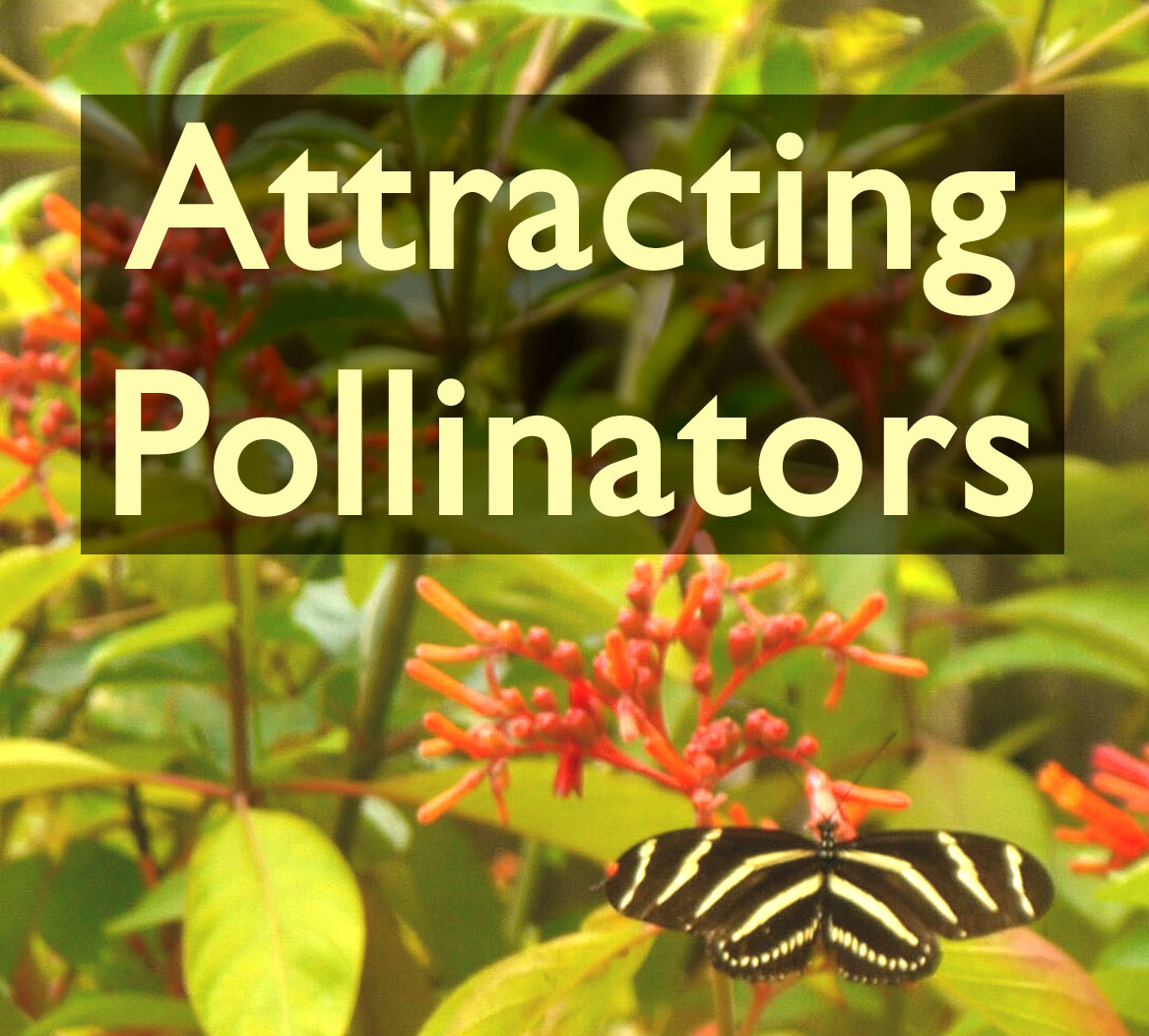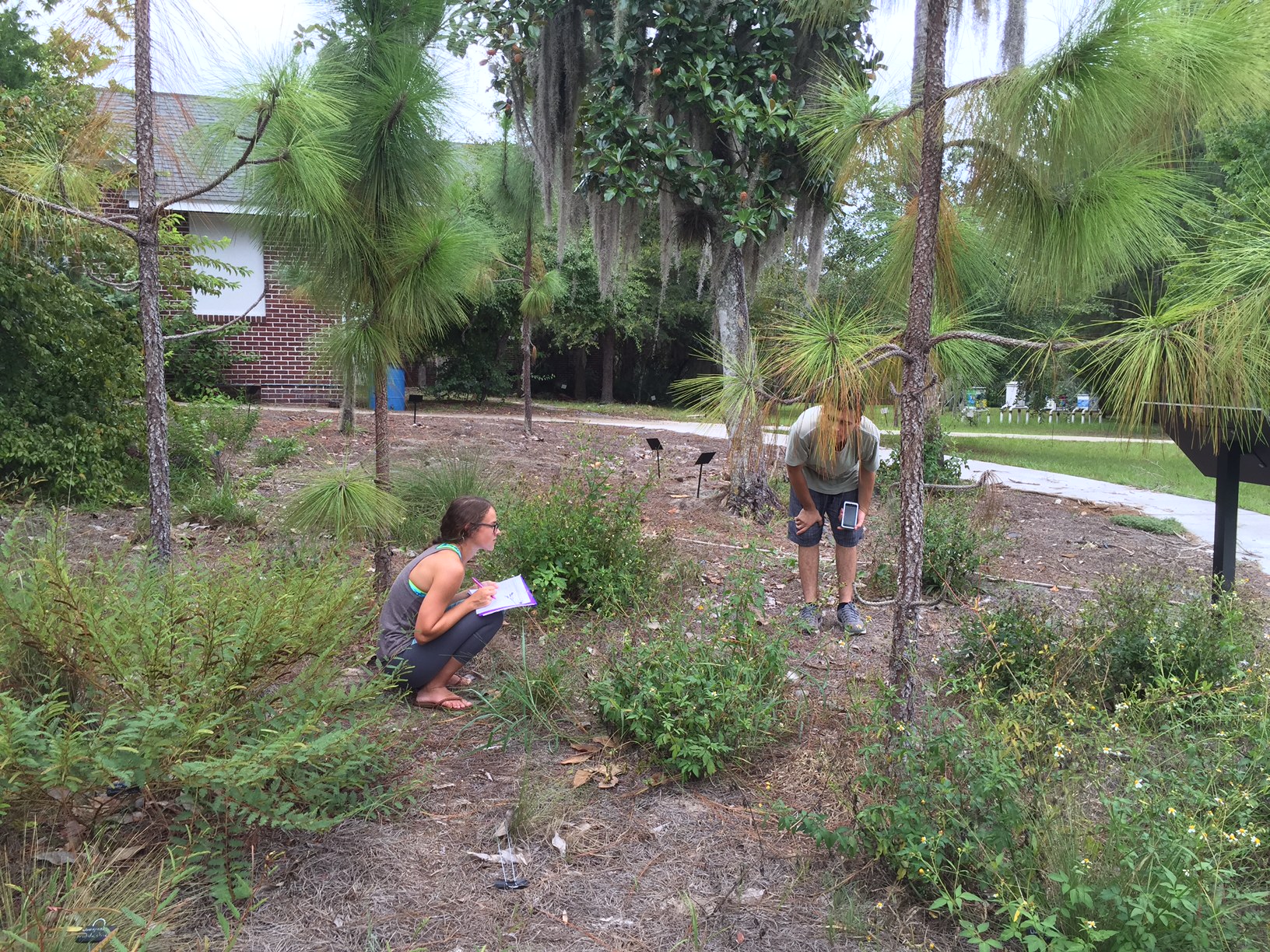
Volusia Sandhill Pollinator Project
Ecological research has demonstrated that loss of habitat has contributed to widespread declines in native pollinator abundance and diversity. There is growing evidence that even fragments of natural habitat in urban settings, like that of the Volusia Sandhill Ecosystem here on the Gillespie Museum grounds, may be important for maintaining healthy populations of a range of different pollinators.
Ongoing Research
As part of a larger comparative study, Stetson biology professors Cindy Bennington and Peter May are measuring pollinator visitation rate and species composition in this campus restoration, acquiring baseline data to be built upon as the site matures.
In the summer of 2016, Professors Bennington and May recorded more than 1300 insect visitors to two plant species (Spanish needles, Bidens alba, and Partridge pea, Chamaecrista fasciculata) in two sites. In both sites, flowers of Spanish needles, attractive to generalist insect pollinators, were visited by a variety of bees, wasps, flies, butterflies and beetles.
Of note, they found that the flowers of Spanish needles (Bidens alba) in the Volusia Sandhill site experienced greater visitation by bees (number of visitors/inflorescence/minute) than did flowers in a large sandhill habitat fragment within Heart Island Conservation Area, DeLeon Springs, FL. These data, part of a long-term study of pollinator abundance in the Volusia Sandhill, confirm findings from studies in other locations that show that urban habitat fragments like the Volusia Sandhill Ecosystem can support diverse pollinator populations.
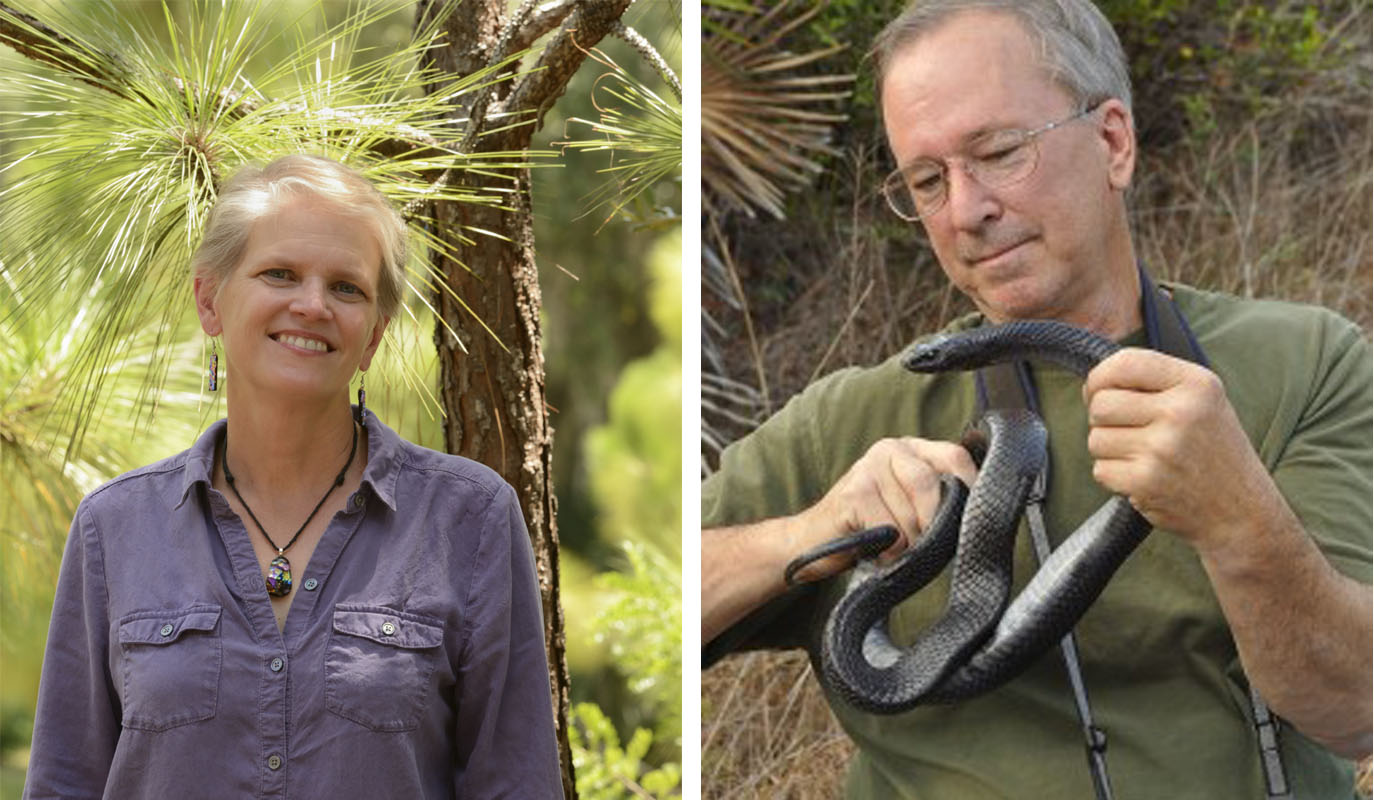
Professors Cynthia Bennington and Peter May, Biology, Stetson University.
A new article in the April 2020 issue of Natural Areas Journal summarizes Bennington and May's findings, based on research from three years (2016-18), assessing the ability of the Volusia Sandhill Ecoystem to support wild insect pollinators. Comparing visitation to flowering plants in two sites—our campus urban restoration and a sandhill site at nearby Heart Island Conservation Area—they found that total insect visitation rates were not significantly different between years or sites, suggesting that even a small urban fragment is capable of maintaining abundant pollinators. Check out the abstract of their article, "Pollinator Communities of Restored Sandhills: a Comparison of Insect Visitation Rates to Generalist and Specialist Flowering Plants in Sandhill Ecosystems of Central Florida."
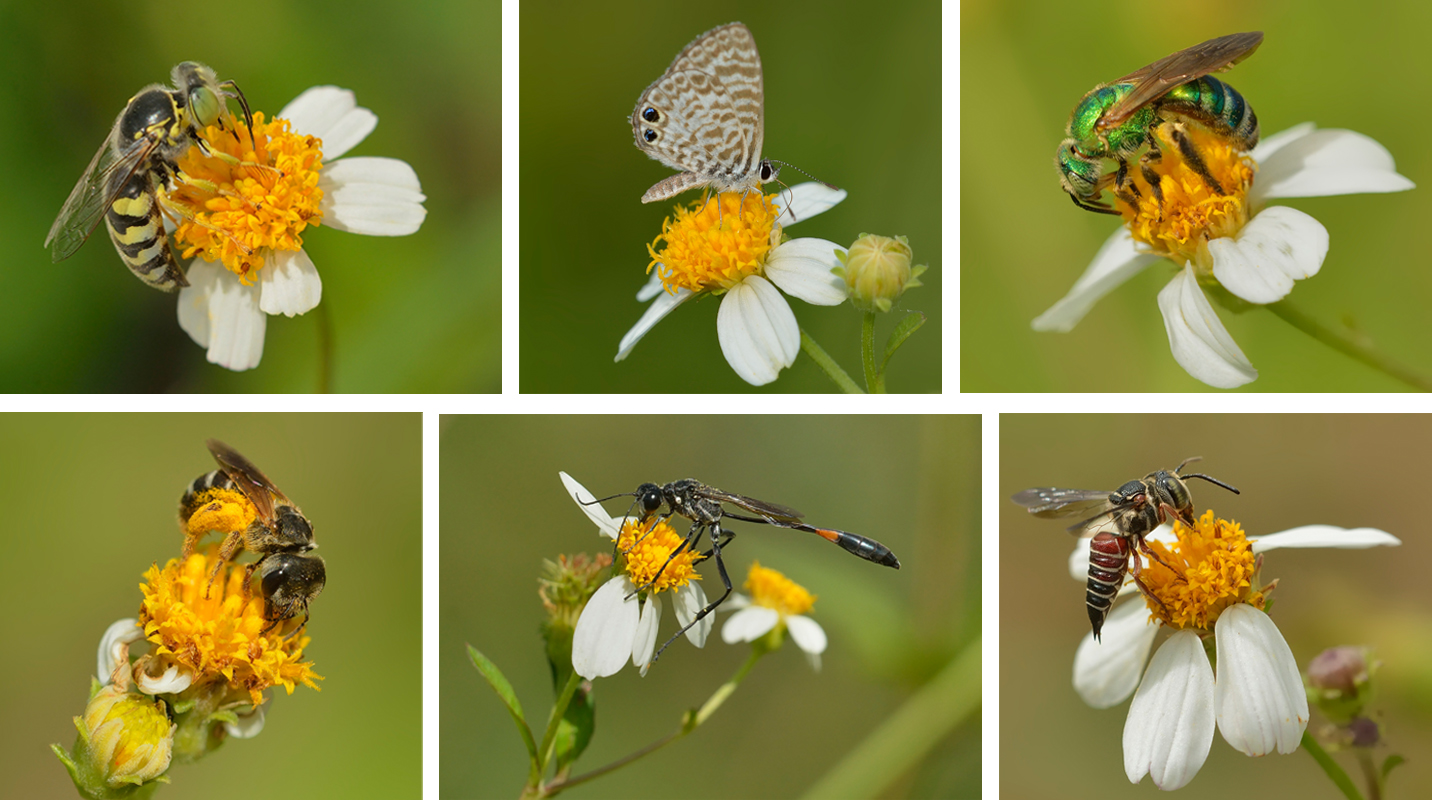
Spanish needle (Bidens alba), which produce copious nectar and pollen, is visited by a diversity of bees, wasps, butterflies, beetles and flies.
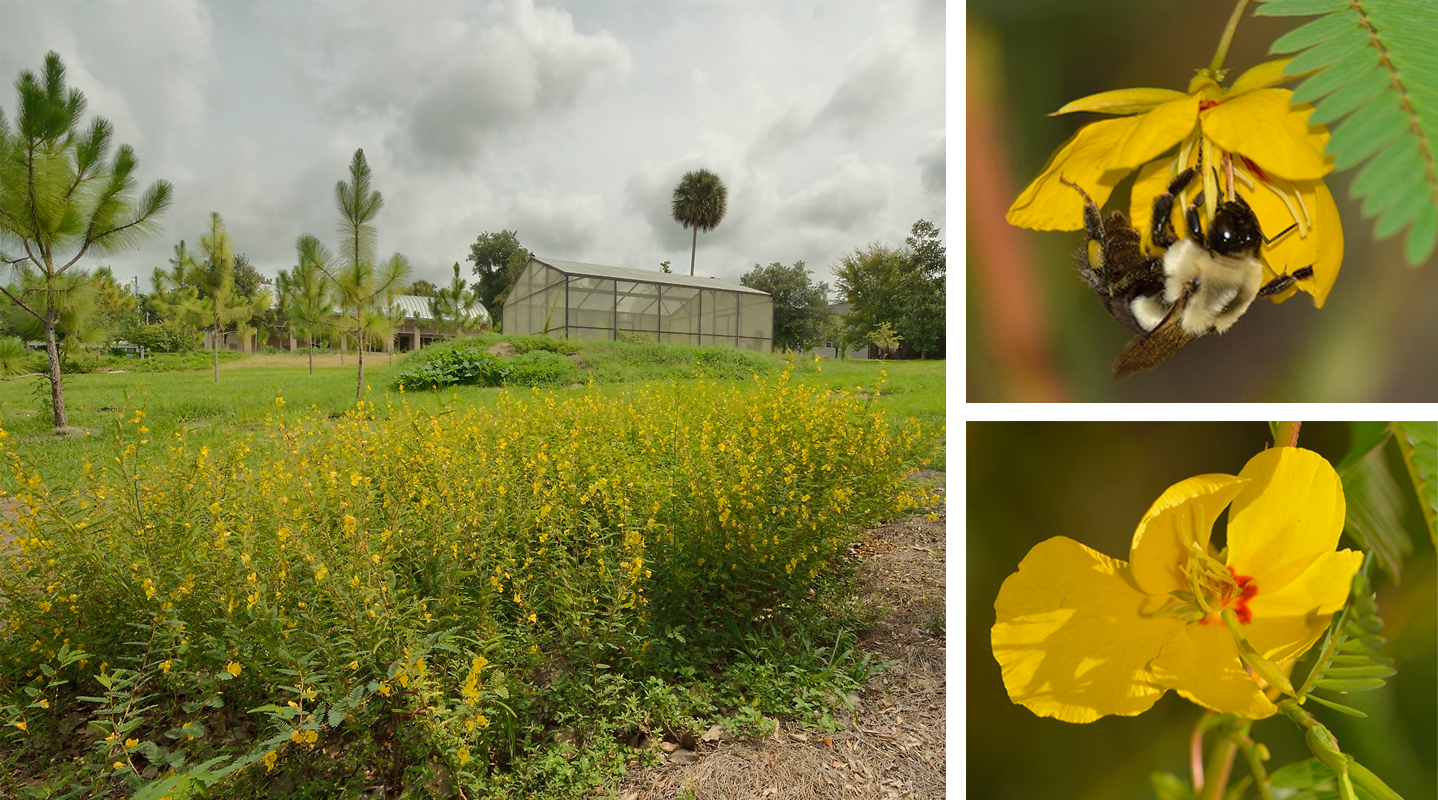
Partridge pea (Chamaecrista fasciculata) produces no nectar. Its pollen is available only to those insects, such as large bumblebees ( Bombus sp.), whose wing vibrations buzz at a frequency which release the pollen to its anthers.
You can help support pollinators by incorporating native plants into your own yard or garden. Dr. Bennington has created a How-to video on Attracting Pollinators with Native Florida Wildflowers.
Field Study for All
Visitors to the Volusia Sandhill may continue to monitor native pollinator activity, to extend the data set. After examining the native pollinator collection in the museum's Collections Room and photos of the diverse insects at work, volunteers may sit quietly at designated stations in the landscape to record numbers and types of pollination activity.
To try your hand at some simple citizen science in the sandhill, download this Pollinator Observation Worksheet and take a visit to the teaching landscape on the Gillespie Museum grounds.
Undergraduates monitor native pollinators in one of the designated observation areas in ongoing data collection.
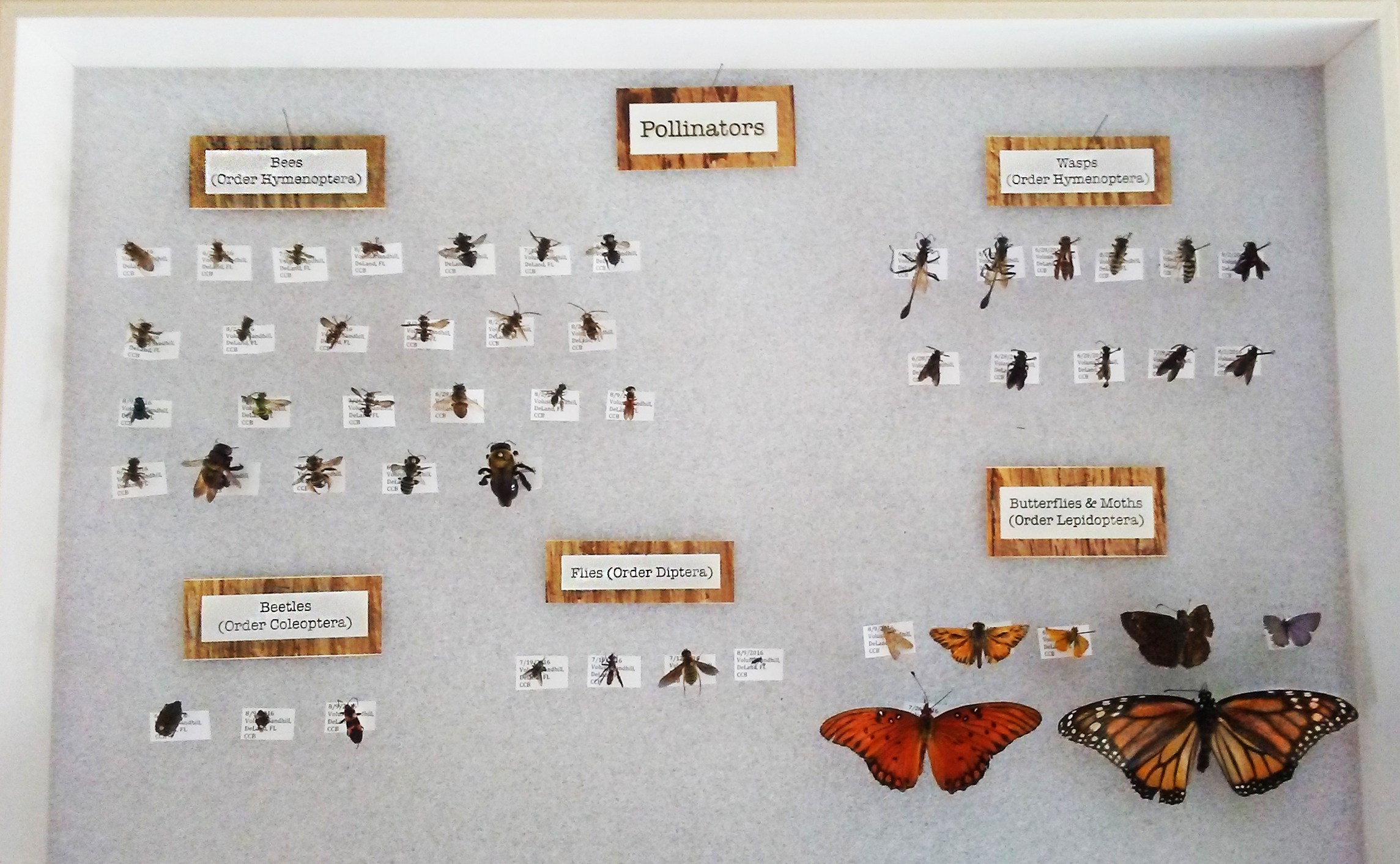
By studying native pollinators in the museum's Collections Room, visitors learn to identify beneficial insects.
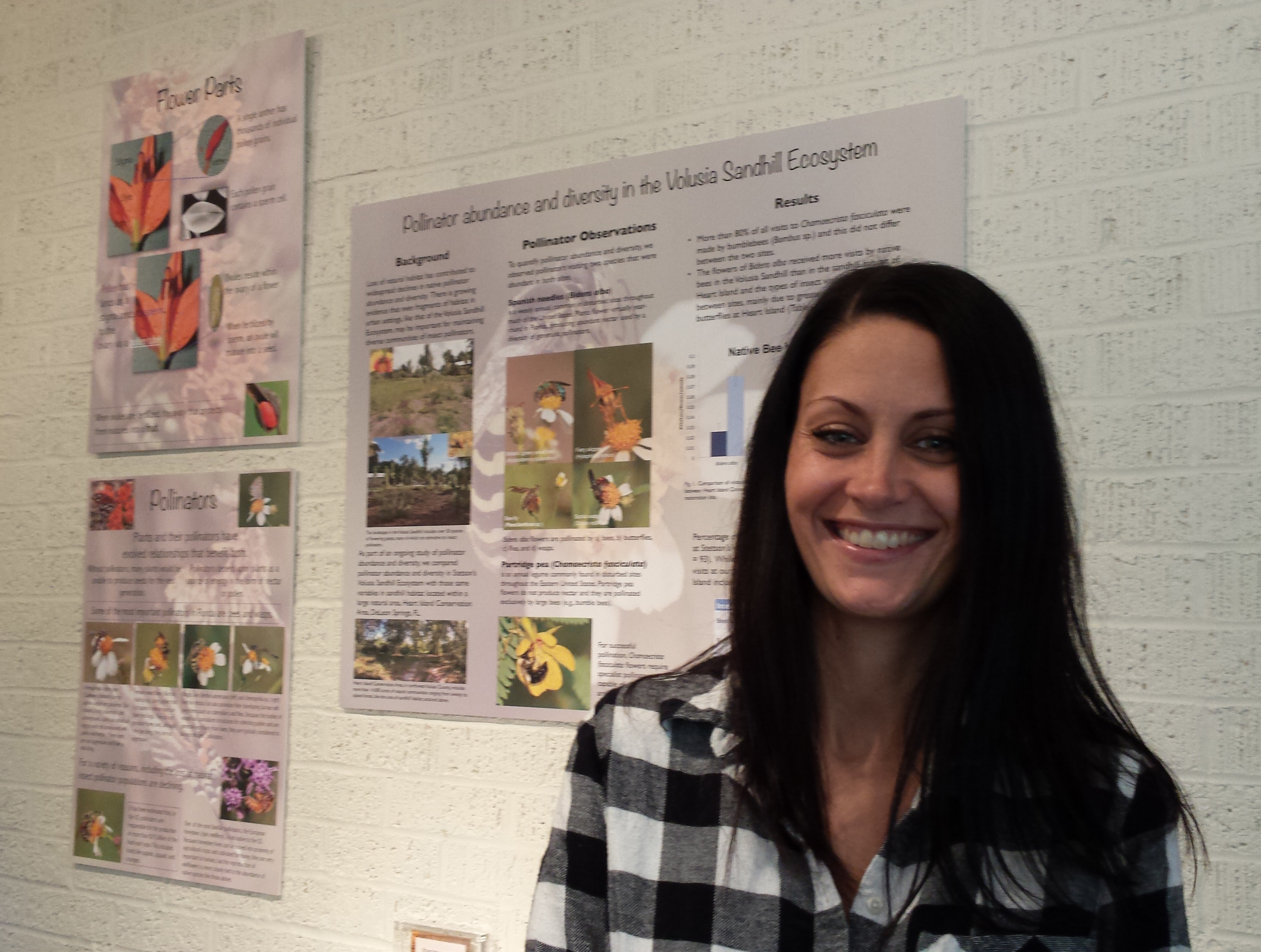
Biology major Sarah Garcia has designed pollinator activity logs as part of her senior research project, “Assessment of the Effectiveness of Informal Field Study of Pollinators”.
